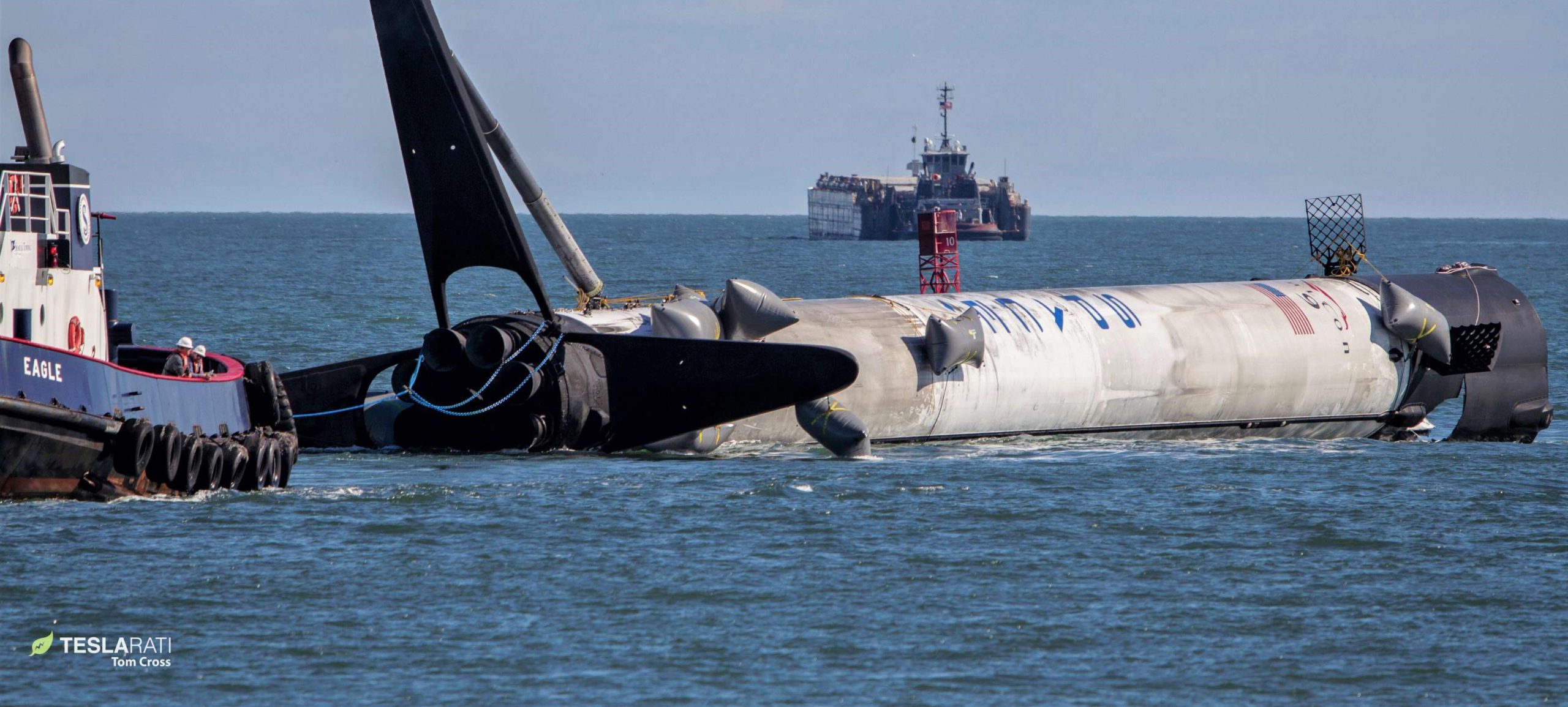
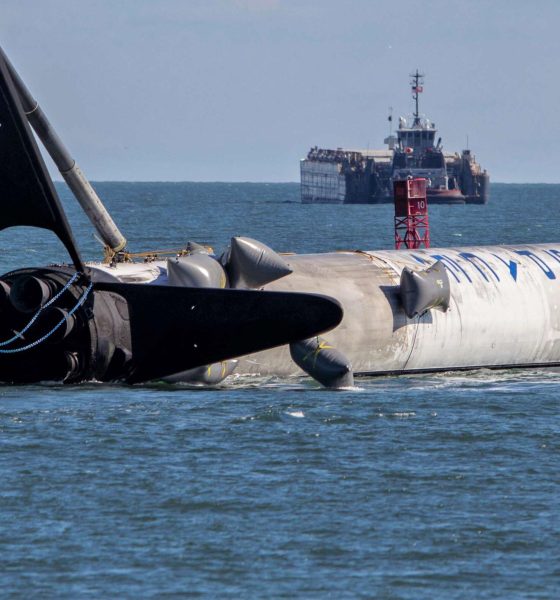
News
SpaceX nails Starlink launch but narrowly misses landing after fastest booster reuse yet
SpaceX has successfully completed its fifth launch of 60 Starlink communications satellites but suffered a surprising landing failure, an exceedingly rare reminder of just how quickly the company has made Falcon rocket reusability feel routine.
As previously discussed, despite the booster’s apparent demise in the Atlantic Ocean, SpaceX did nevertheless break its internal turnaround record with Falcon 9 B1056, launching the booster twice in just 62 days. While unfortunate, it’s important to remember that today’s Starlink mission (Starlink V1 L4) was B1056’s fourth launch in 10 months – an extraordinarily productive career relative to any other orbital-class rocket in existence.
Still, the fact remains that even in a best-case scenario, B1056 has probably reached an early grave and is unlikely to support any future launches. The Falcon 9 booster’s missed landing is the first in almost 15 months and the second to fail because of inaccurate navigation. Based on an uninterrupted live feed provided by drone ship Of Course I Still Love You (OCISLY), there is even a chance that SpaceX’s last Falcon 9 landing failure will be precisely replicated, meaning that another booster could very well be stranded – intact – at sea.
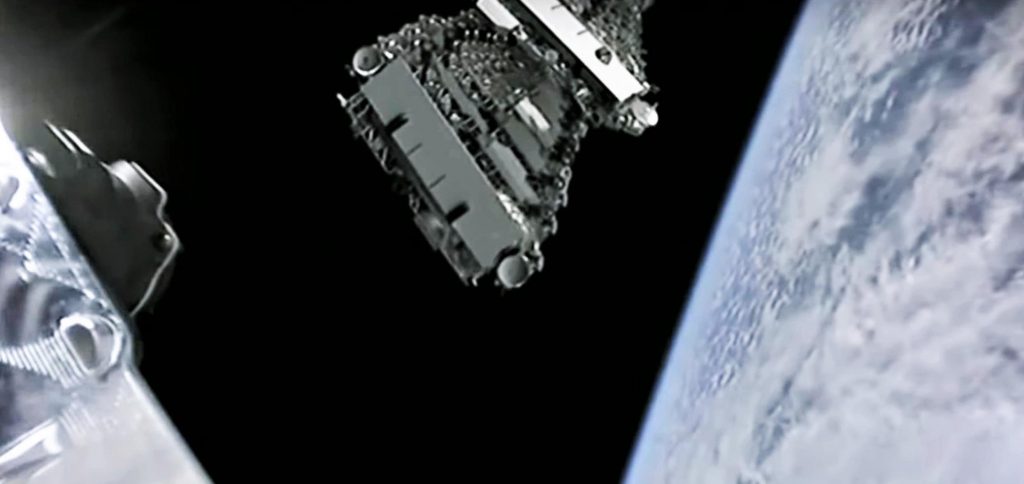
Back in December 2018, Falcon 9 booster B1050 successfully completed the primary goal of its launch debut, sending SpaceX’s CRS-16 Cargo Dragon spacecraft and a Falcon upper stage on their way to orbit. Around seven minutes after liftoff, it became clear that something was wrong with the booster as it began to spin about in an unusually violent manner. About a minute later, still spinning, the Falcon 9 booster deployed its landing legs and performed a nearly flawless soft landing. The only problem: B1050’s soft landing occurred in the Atlantic Ocean instead of the actual target, one of SpaceX’s two Cape Canaveral landing pads (LZ-1/2).
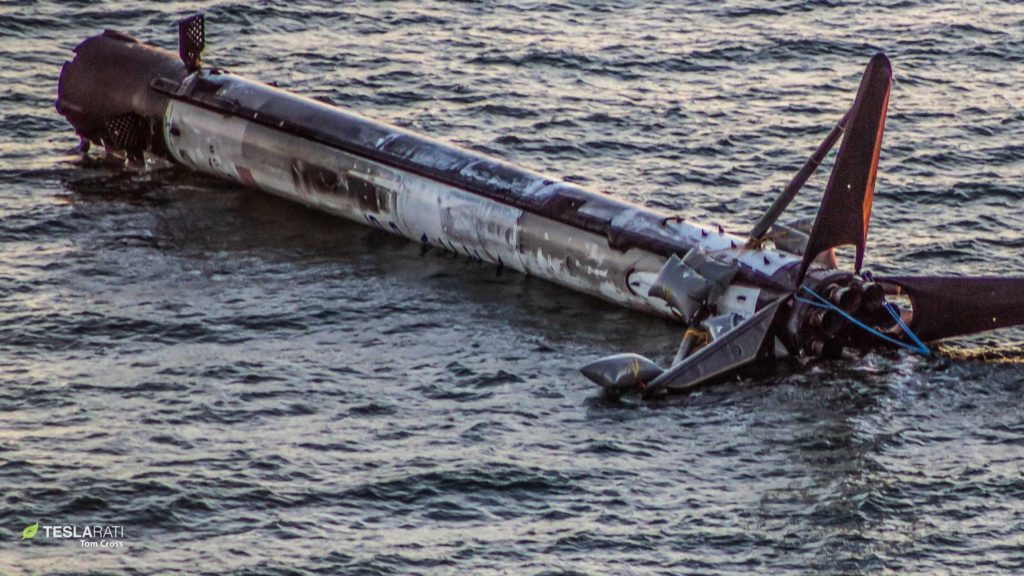

As a result, the Block 5 booster found itself almost entirely intact and floating in the Atlantic Ocean. Because it was just a handful of miles away from Port Canaveral, SpaceX was able to rapidly dispatch a recovery team and eventually managed to bring the booster back into port and onto dry land a few days after its landing anomaly. While CEO Elon Musk indicated at the time that there was at least a chance B1050 could be refurbished for another flight, the booster has unsurprisingly not launched again and probably never will. Falcon 9 may be designed to tolerate extreme weather but “submersion in seawater” is undoubtedly a major stretch.
Still, the point is that there’s a good chance that Falcon 9 B1056 is more or less intact in the Atlantic Ocean after its inaccurate – but seemingly controlled – February 17th landing. Given that B1056, drone ship OCISLY, and support ship GO Quest are all some 630 km (390 mi) from Port Canaveral, there is almost no chance that SpaceX will go to the extraordinary effort of dragging a floating B1056 – even if perfectly intact – all the way back to Florida. It’s not an impossibility, however.
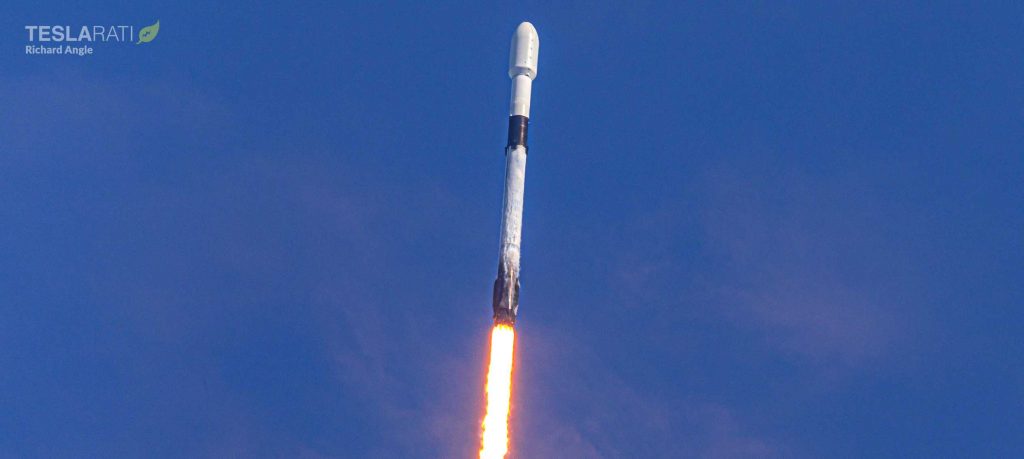
Based on the fact that B1056 kicked up visible sea spray just a few hundred feet from OCISLY’s deck, as well as the distinct lack of an obvious explosion, it looks likely that the Falcon 9 booster suffered some kind of navigational failure. It’s possible that it experienced the same hydraulic failure that disabled B1050’s four grid fins, but a new kind of failure – like anomalous GPS readings, a broken laser altimeter, failed Merlin 1D engine thrust vectoring, or something more complex – could be the ultimate source of the missed landing.
Regardless of whether parts or the entirety of the booster can be recovered, SpaceX will almost certainly learn a lesson (or several) from Falcon 9 B1056’s premature demise, hopefully allowing future rocket landings to avoid the same fate. Most importantly, today’s primary objective – placing 60 new Starlink satellites in orbit – was a flawless success, even if B1056’s loss is still a blow. SpaceX’s next Falcon 9 launch is currently scheduled no earlier than (NET) March 2nd and is unlikely to be delayed by today’s events.
Check out Teslarati’s Marketplace! We offer Tesla accessories, including for the Tesla Cybertruck and Tesla Model 3.

Elon Musk
Elon Musk’s X will start using a Tesla-like software update strategy
The initiative seems designed to accelerate updates to the social media platform, while maintaining maximum transparency.

Elon Musk’s social media platform X will adopt a Tesla-esque approach to software updates for its algorithm.
The initiative seems designed to accelerate updates to the social media platform, while maintaining maximum transparency.
X’s updates to its updates
As per Musk in a post on X, the social media company will be making a new algorithm to determine what organic and advertising posts are recommended to users. These updates would then be repeated every four weeks.
“We will make the new 𝕏 algorithm, including all code used to determine what organic and advertising posts are recommended to users, open source in 7 days. This will be repeated every 4 weeks, with comprehensive developer notes, to help you understand what changed,” Musk wrote in his post.
The initiative somewhat mirrors Tesla’s over-the-air update model, where vehicle software is regularly refined and pushed to users with detailed release notes. This should allow users to better understand the details of X’s every update and foster a healthy feedback loop for the social media platform.
xAI and X
X, formerly Twitter, has been acquired by Elon Musk’s artificial intelligence startup, xAI last year. Since then, xAI has seen a rapid rise in valuation. Following the company’s the company’s upsized $20 billion Series E funding round, estimates now suggest that xAI is worth tens about $230 to $235 billion. That’s several times larger than Tesla when Elon Musk received his controversial 2018 CEO Performance Award.
As per xAI, the Series E funding round attracted a diverse group of investors, including Valor Equity Partners, Stepstone Group, Fidelity Management & Research Company, Qatar Investment Authority, MGX, and Baron Capital Group, among others. Strategic partners NVIDIA and Cisco Investments also continued support for building the world’s largest GPU clusters.
News
Tesla FSD Supervised wins MotorTrend’s Best Driver Assistance Award
The decision marks a notable reversal for the publication from prior years, with judges citing major real-world improvements that pushed Tesla’s latest FSD software ahead of every competing ADAS system.

Tesla’s Full Self-Driving (Supervised) system has been named the best driver-assistance technology on the market, earning top honors at the 2026 MotorTrend Best Tech Awards.
The decision marks a notable reversal for the publication from prior years, with judges citing major real-world improvements that pushed Tesla’s latest FSD software ahead of every competing ADAS system. And it wasn’t even close.
MotorTrend reverses course
MotorTrend awarded Tesla FSD (Supervised) its 2026 Best Tech Driver Assistance title after extensive testing of the latest v14 software. The publication acknowledged that it had previously criticized earlier versions of FSD for erratic behavior and near-miss incidents, ultimately favoring rivals such as GM’s Super Cruise in earlier evaluations.
According to MotorTrend, the newest iteration of FSD resolved many of those shortcomings. Testers said v14 showed far smoother behavior in complex urban scenarios, including unprotected left turns, traffic circles, emergency vehicles, and dense city streets. While the system still requires constant driver supervision, judges concluded that no other advanced driver-assistance system currently matches its breadth of capability.
Unlike rival systems that rely on combinations of cameras, radar, lidar, and mapped highways, Tesla’s FSD operates using a camera-only approach and is capable of driving on city streets, rural roads, and freeways. MotorTrend stated that pure utility, the ability to handle nearly all road types, ultimately separated FSD from competitors like Ford BlueCruise, GM Super Cruise, and BMW’s Highway Assistant.
High cost and high capability
MotorTrend also addressed FSD’s pricing, which remains significantly higher than rival systems. Tesla currently charges $8,000 for a one-time purchase or $99 per month for a subscription, compared with far lower upfront and subscription costs from other automakers. The publication noted that the premium is justified given FSD’s unmatched scope and continuous software evolution.
Safety remained a central focus of the evaluation. While testers reported collision-free operation over thousands of miles, they noted ongoing concerns around FSD’s configurable driving modes, including options that allow aggressive driving and speeds beyond posted limits. MotorTrend emphasized that, like all Level 2 systems, FSD still depends on a fully attentive human driver at all times.
Despite those caveats, the publication concluded that Tesla’s rapid software progress fundamentally reshaped the competitive landscape. For drivers seeking the most capable hands-on driver-assistance system available today, MotorTrend concluded Tesla FSD (Supervised) now stands alone at the top.
News
Elon Musk’s Grokipedia surges to 5.6M articles, almost 79% of English Wikipedia
The explosive growth marks a major milestone for the AI-powered online encyclopedia, which was launched by Elon Musk’s xAI just months ago.

Elon Musk’s Grokipedia has grown to an impressive 5,615,201 articles as of today, closing in on 79% of the English Wikipedia’s current total of 7,119,376 articles.
The explosive growth marks a major milestone for the AI-powered online encyclopedia, which was launched by Elon Musk’s xAI just months ago. Needless to say, it would only be a matter of time before Grokipedia exceeds English Wikipedia in sheer volume.
Grokipedia’s rapid growth
xAI’s vision for Grokipedia emphasizes neutrality, while Grok’s reasoning capabilities allow for fast drafting and fact-checking. When Elon Musk announced the initiative in late September 2025, he noted that Grokipedia would be an improvement to Wikipedia because it would be designed to avoid bias.
At the time, Musk noted that Grokipedia “is a necessary step towards the xAI goal of understanding the Universe.”
Grokipedia was launched in late October, and while xAI was careful to list it only as Version 0.1 at the time, the online encyclopedia immediately earned praise. Wikipedia co-founder Larry Sanger highlighted the project’s innovative approach, noting how it leverages AI to fill knowledge gaps and enable rapid updates. Netizens also observed how Grokipedia tends to present articles in a more objective manner compared to Wikipedia, which is edited by humans.
Elon Musk’s ambitious plans
With 5,615,201 total articles, Grokipedia has now grown to almost 79% of English Wikipedia’s article base. This is incredibly quick, though Grokipedia remains text-only for now. xAI, for its part, has now updated the online encyclopedia’s iteration to v0.2.
Elon Musk has shared bold ideas for Grokipedia, including sending a record of the entire knowledge base to space as part of xAI’s mission to preserve and expand human understanding. At some point, Musk stated that Grokipedia will be renamed to Encyclopedia Galactica, and it will be sent to the cosmos.
“When Grokipedia is good enough (long way to go), we will change the name to Encyclopedia Galactica. It will be an open source distillation of all knowledge, including audio, images and video. Join xAI to help build the sci-fi version of the Library of Alexandria!” Musk wrote, adding in a later post that “Copies will be etched in stone and sent to the Moon, Mars and beyond. This time, it will not be lost.”








